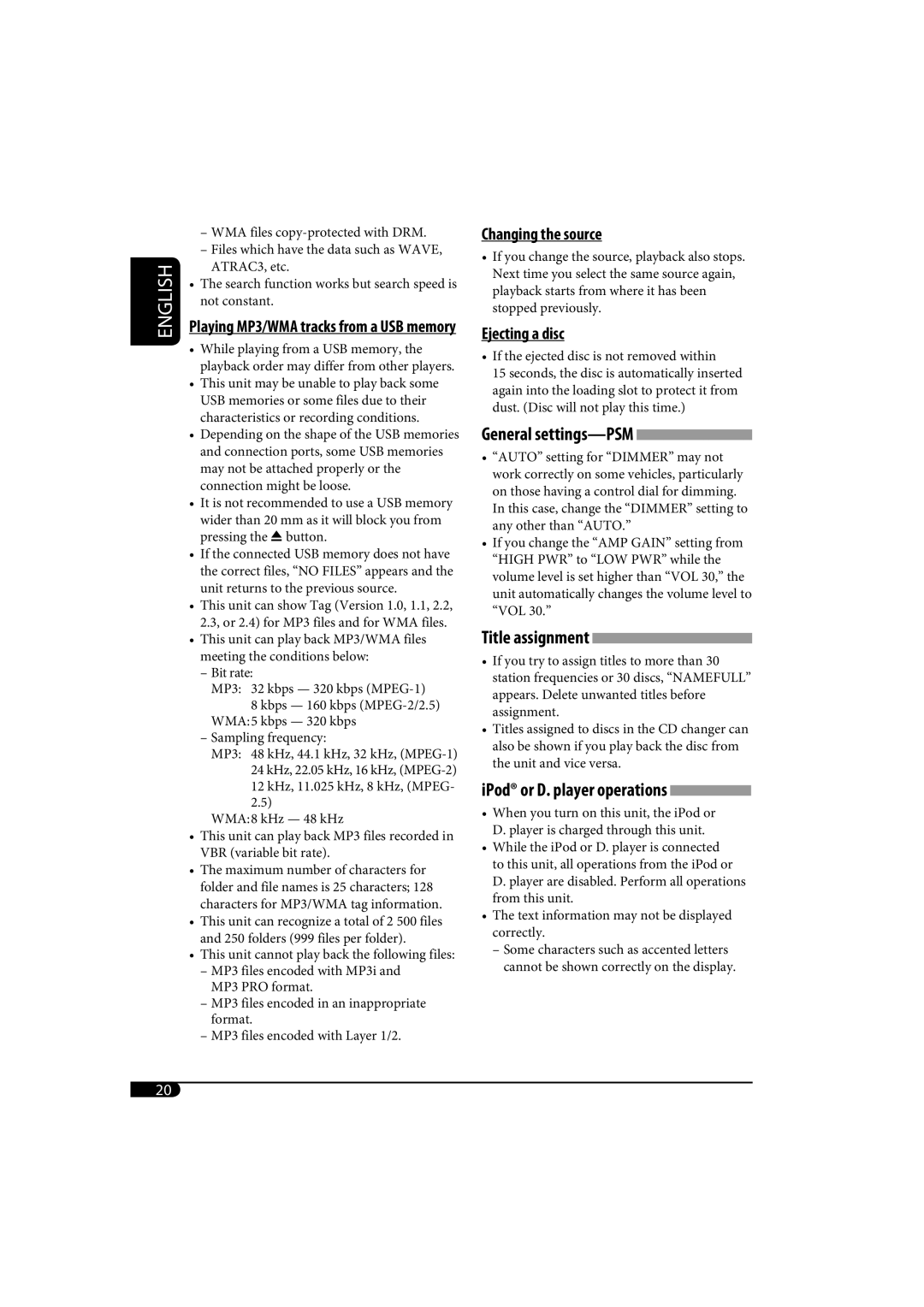KD-G720, KD-AR770 specifications
The JVC KD-AR770 and KD-G720 are two prominent car audio receivers that exemplify JVC's commitment to delivering high-quality sound and advanced features for automotive enthusiasts. With their cutting-edge technology and user-friendly design, these models cater to a wide range of audio preferences and requirements.The JVC KD-AR770 stands out with its sleek appearance and intuitive interface. One of its main features is the ability to connect to various audio sources, including USB ports for direct playback from flash drives, as well as Bluetooth connectivity for wireless streaming. This allows users to enjoy their favorite music from smartphones and other compatible devices effortlessly. Additionally, the built-in amplifier delivers a powerful output, ensuring that every note is crisp and clear.
Equipped with a comprehensive equalizer, the KD-AR770 allows users to customize their sound experience. This feature enables them to adjust frequency levels for bass, mid, and treble, creating a tailored audio profile that suits individual preferences. The receiver also supports various audio formats, including MP3 and WAV files, ensuring versatility for music lovers.
On the other hand, the JVC KD-G720 shares many similarities with the KD-AR770 but adds its own unique features. With a vibrant LCD display, the KD-G720 enhances usability with easy navigation through menus, making it accessible for all users. Like its counterpart, it supports multiple audio sources, including CD playback and iPod connectivity, enabling users to enjoy a variety of listening options.
Both models feature high-quality sound enhancement technologies, such as JVC's Digital Sound Processing (DSP), which enhances the overall audio output, providing an immersive listening experience. The receivers also include programmable presets, allowing users to store their favorite radio stations for quick access.
Another notable characteristic of both the KD-AR770 and KD-G720 is their user-friendly controls. The layout of buttons and knobs is designed for ease of use, ensuring that drivers can adjust settings safely while on the road. Furthermore, each model has compatibility with various vehicle systems, making installation straightforward.
In summary, the JVC KD-AR770 and KD-G720 are impressive car audio receivers designed for those who seek quality sound and convenience. Their array of features, from Bluetooth connectivity to customizable sound settings, combined with user-friendly interfaces, makes them ideal choices for enhancing any vehicle's audio system. With these receivers, drivers can enjoy a richer, more engaging listening experience miles down the road.
